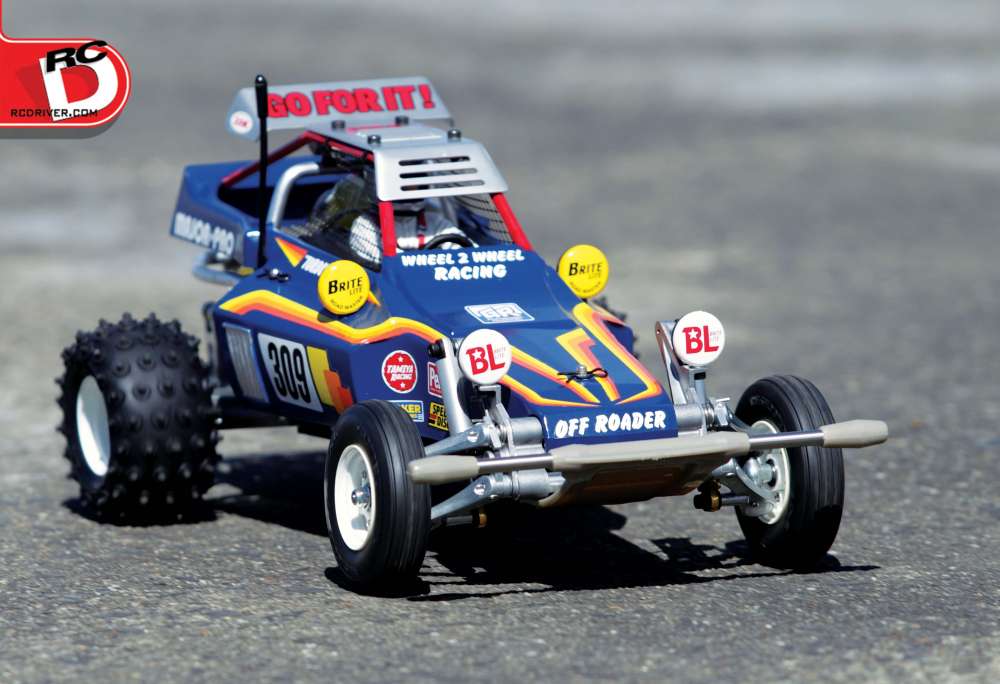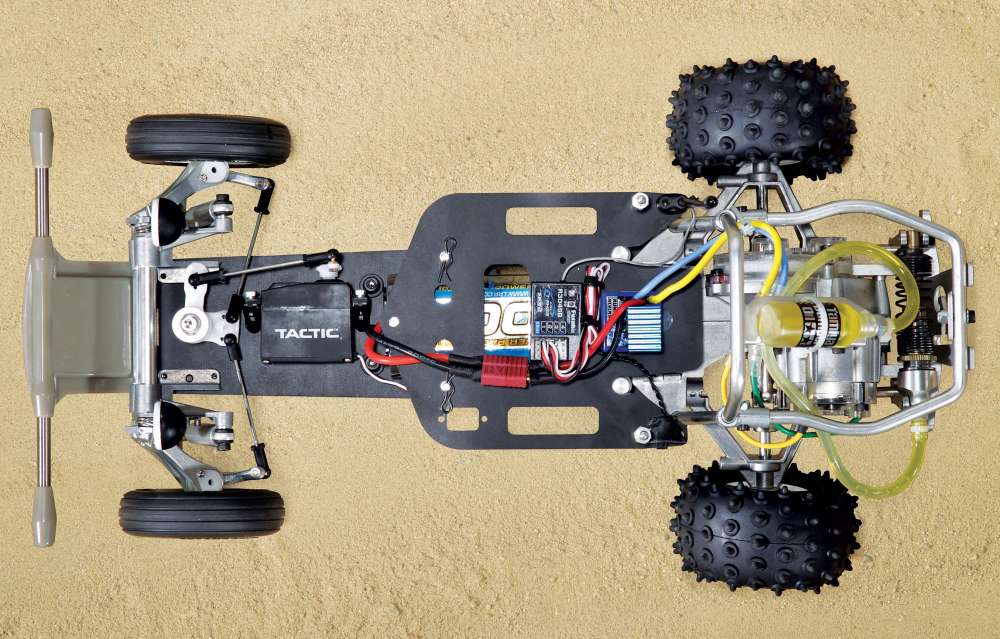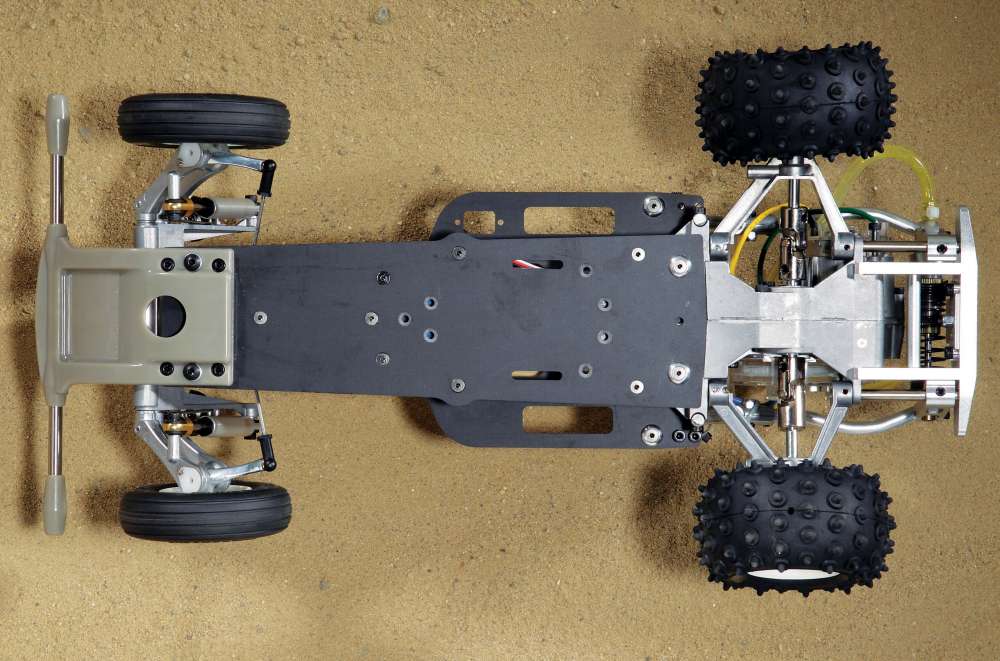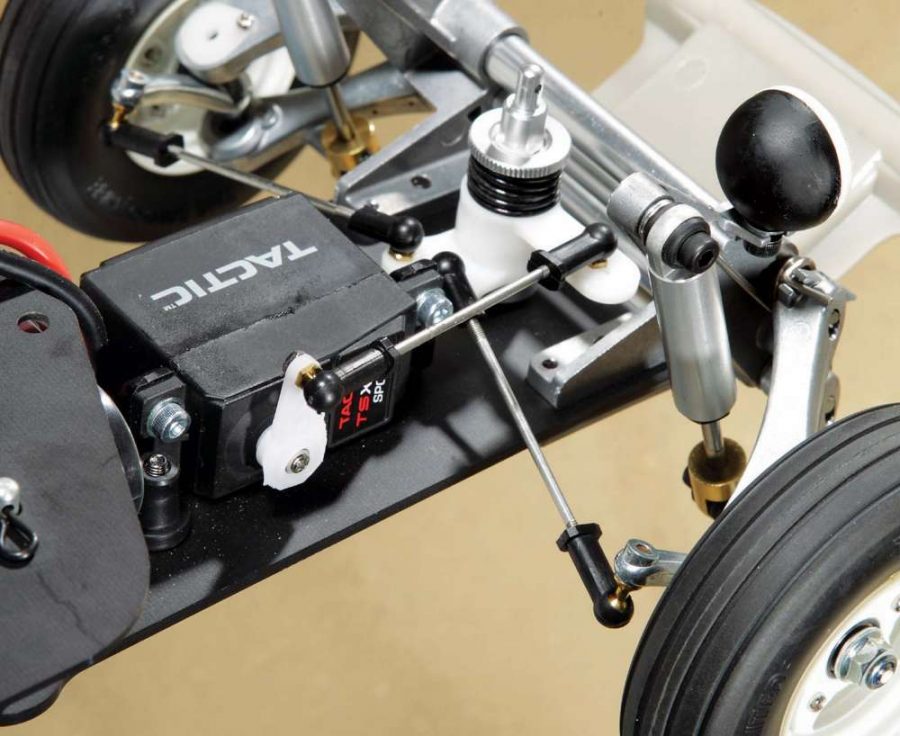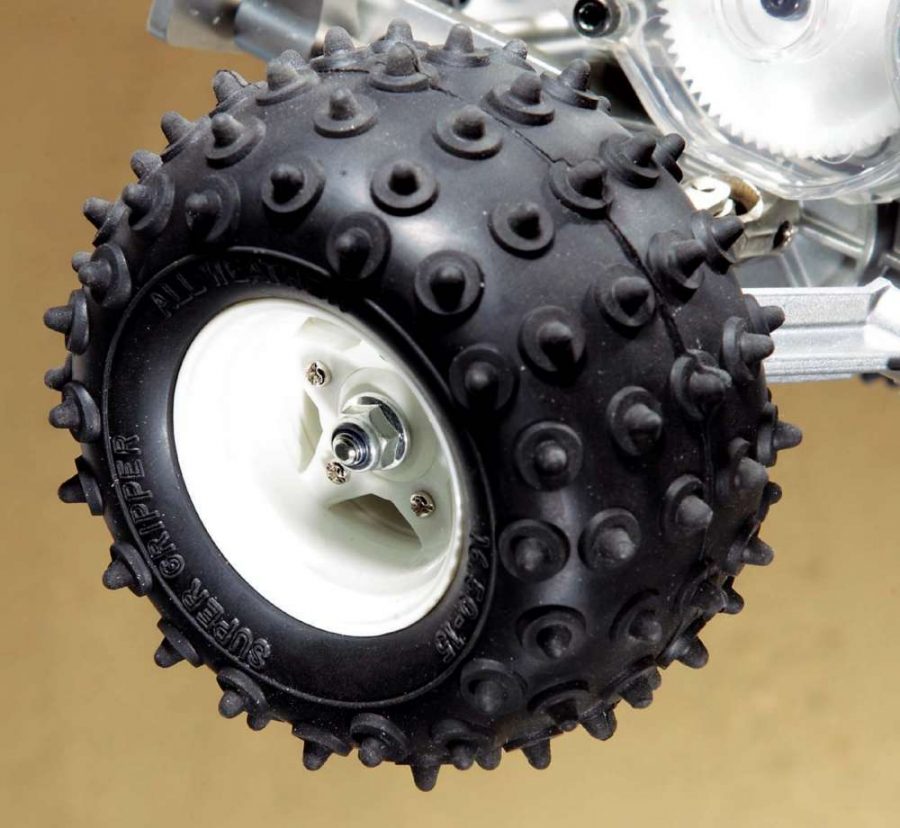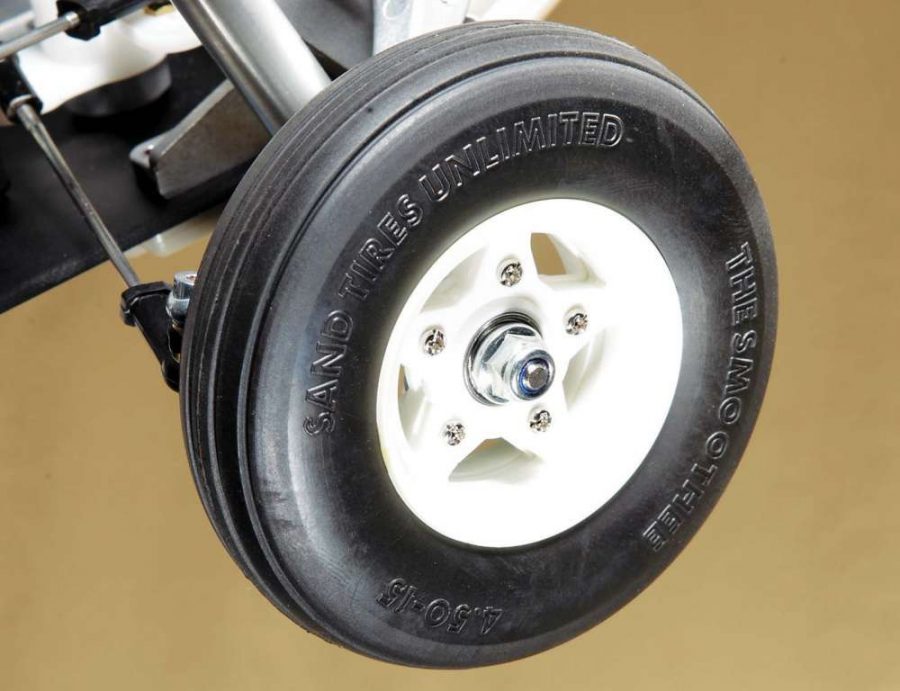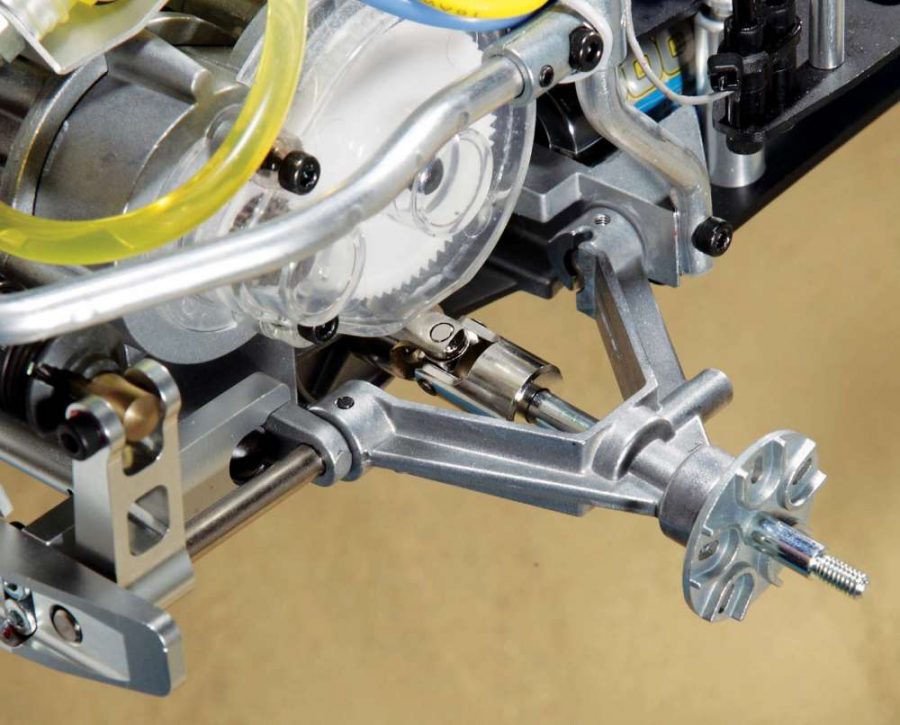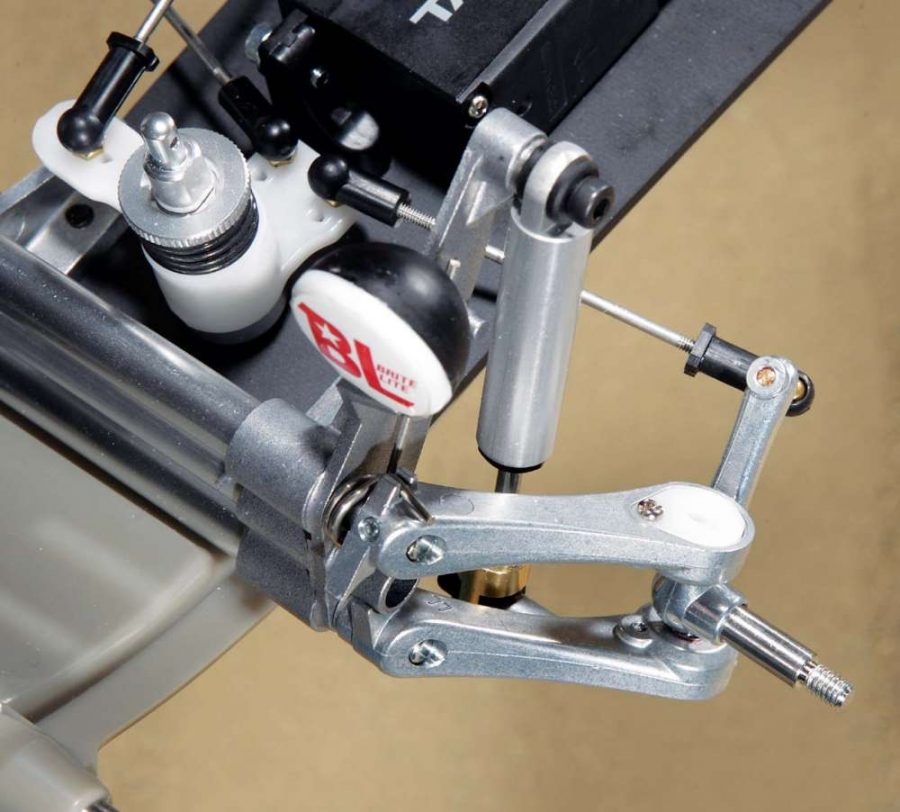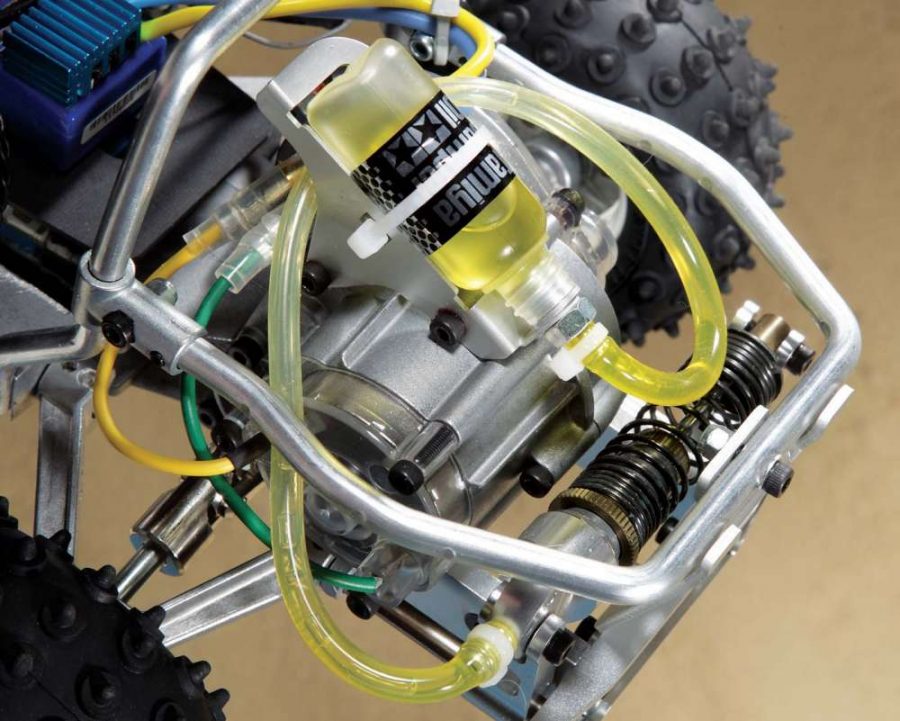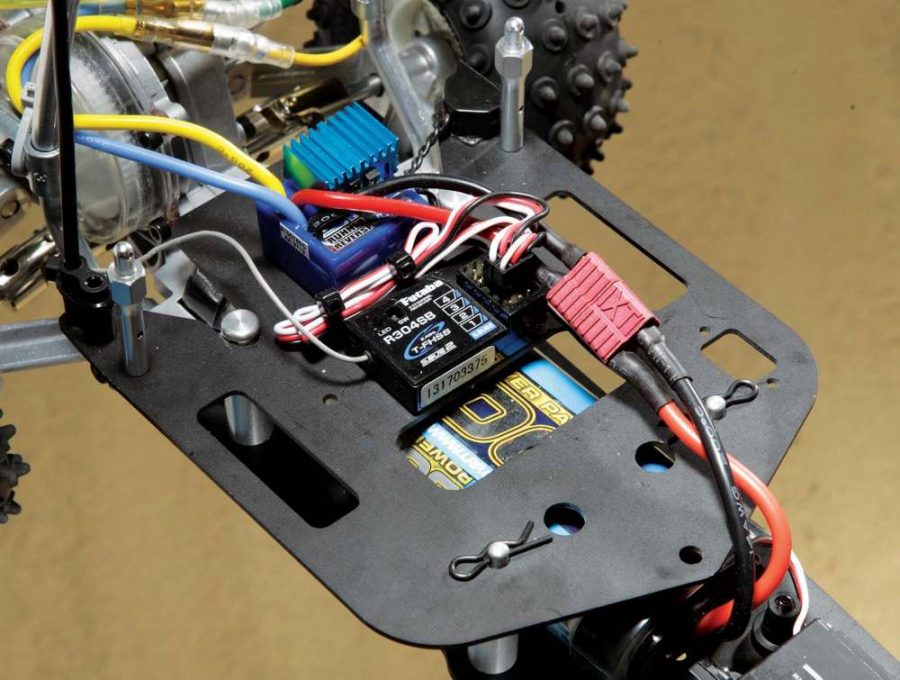It may be a re-release, but it’s still as stunning as the original!
This article was originally published in RC Driver’s June 2015 issue.
If you’ve been around a spell, you’ll know that the Fighting Buggy was once called the Super Champ. This vehicle was released back in 1982 and was actually my first experience with RC. My mom bought the Super Champ for my dad for Christmas. During the time he was building it, I remember sitting next to him, watching impatiently for it to be done so we could take it for a spin. I loved the bodywork. I loved the netting and aluminum wing. I loved the driver. This buggy was awesome, and I couldn’t wait to see it go. On D-Day, as I like to call it now, my dad took it out, plugged the pack in and set it on the ground. He punched the throttle and as it lurched forward at full speed (a little faster than I think he expected), his knee-jerk reaction was to slam on the brakes. Back then there were no electronic ESCs, simply a servo-controlled wiper arm, so any movement in the arm resulted in movement in the car. As my dad applied the brakes, the Super Champ immediately reversed direction, still at full speed, and slammed into a short, cinderblock wall, breaking the rear bumper off. We both kind of laughed but I know it was a difficult thing to experience; we’ve all been there with our first cars. When I heard about the re-release of this buggy, I knew I had to have it not just for myself, but also as a shelf queen for my dad, you know, to remind him of the good old days when I was a kid and we were both new to RC.
AT A GLANCE
WHO MAKES IT: Tamiya
WHO IT’S FOR: Anyone and everyone
PART NUMBER: 84389
HOW MUCH: $350
BUILD TYPE: Kit
PROS
• Beautiful ABS bodywork, driver, wheel, tires; the whole package
• Unique front trailing arm suspension, combining spring wire and oil-filled dampers
• Dual-plane chassis in black fiberglass
• Aluminum transmission case, just like the original
• Mono-shock rear suspension
• No glue required on the tires, uses three- piece wheels
• Rear roll cage helps protect the transmission and rear suspension
• Accepts long or shorty NiMh or LiPo packs
CONS
• Absolutely none
REVIEWER’S OPINION
Tamiya has done an excellent job of recreating the original Super Champ. Even though they’ve made a few tweaks, the Fighting Buggy still retains the look, feel and handling of the original. If you’ve always wanted one of these and can’t stomach the $1,000+ for an original, this is definitely a viable option.
TOOLS AND ACCESSORIES INCLUDED
• L wrenches
ITEMS NEEDED
• Servo
• Electronic Speed Control Transmitter
• Battery
ITEMS USED
• Tactic TSX35 Servo
• LRP Ai Runner Reverse V2 ESC
• Futaba 4PLS Transmitter
• LRP 3000mAh 7.2V NiMh Power Pack
FEATURE BREAKDOWN
The chassis of the Fighting Buggy utilizes a flat, 2.5mm black fiberglass plate. The servo saver and servo mount directly to the chassis up front. Just behind the servo sits the battery, mounting inline on the chassis. Four 10mm posts (instead of the original car’s single post) extend up to a wide top deck where the receiver and ESC mount. This top deck has a pair body clips up front to release it, allowing access to the battery. It’s a durable setup that’s now strong enough to not require the aluminum bottom triangle panel that was used for reinforcement.
Changing the suspension from the original would be a sin, so Tamiya decided to keep the same design. However, they did update the parts. The front still uses the unique trailing-arm setup, complete with the oil-filled damper tubes and external spring. The rear uses Tamiya’s (FFPDS), or Free-Floating Progressive Damping System. Basically, the rear arms float side-to-side a bit and only use the transverse mono-shock during high-compression. Another unique feature is the bottle of Tamiya Damper Oil that is connected to the shock cap. This is a really early version of today’s shock reservoirs, and Tamiya supplies you with an additional bottle to mount to the car. The suspension was definitely one of the WOW-features on the Super Champ, especially that spare bottle of oil.
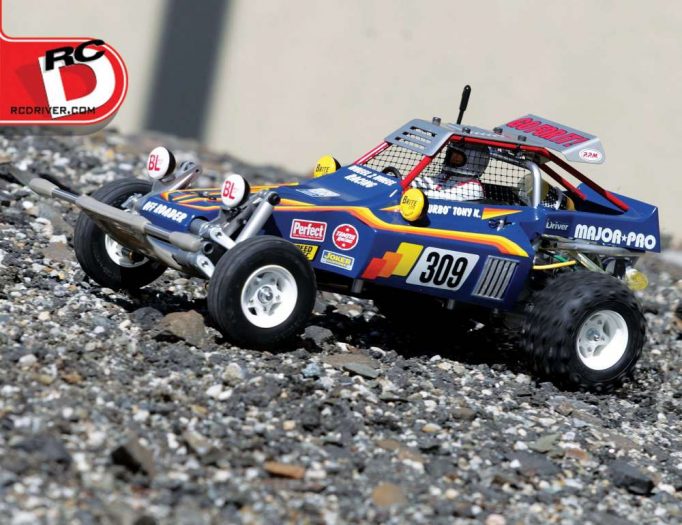 The steering system revolves around a single steering post mounted right in the middle of the chassis. This post incorporates a pretty hefty servo saver spring and also doubles as a front body mount. The original car required you to mount the servo at a slight angle (I’m not sure why), but the Fighting Buggy puts the servo back into its normal position. Thin, 1.7mm threaded rods are used for the drag link and steering links, both capped on each end by tiny ball cups. There isn’t a whole lot of throw in the system, but it’s enough to have some fun.
The steering system revolves around a single steering post mounted right in the middle of the chassis. This post incorporates a pretty hefty servo saver spring and also doubles as a front body mount. The original car required you to mount the servo at a slight angle (I’m not sure why), but the Fighting Buggy puts the servo back into its normal position. Thin, 1.7mm threaded rods are used for the drag link and steering links, both capped on each end by tiny ball cups. There isn’t a whole lot of throw in the system, but it’s enough to have some fun.
The transmission is a monster-sized piece of aluminum that sits right over the rear wheels. It has three internal gears, only one of which is metal (the top gear) and rides on a full set of shielded bearings. The Fighting Buggy does not come with a differential; instead it’s basically a locker unit that gives full power to both wheels at the same time. Burly steel universals attach to the output shafts on the locker that drive 5mm shafts to the rear wheels. The included Tamiya-style 540 motor actually slides into an aluminum cage, helping to protect it but also allowing it to use the aluminum as a giant heat sink. There are two pinion/spur choices – high-speed and low speed, both included. This is definitely the business end of the Fighting Buggy.
The wheels and tires are also excellent replicas of the originals. The three-piece wheels use a pinch-system to keep the tires connected, so there is no need for CA glue. An aluminum roll cage protects the rear of the buggy and connects to the rear bumper for additional support. The body is a masterpiece of beauty, but will require some painting to replicate the box art. It took me some time to get it done but the final product is magnificent.
ON THE TRACK
Even though it’s not an original, the Fighting Buggy could still be considered a collectible to some (including me), so I went a little easy on it with some light dirt driving and a few mild jumps. Sending it off, I was pleased with the power from the LRP ESC, LRP battery and 540 motor combo. It definitely had enough juice to spin the tires and provide some dirt-throwing excitement. The top speed was pretty good too. Steering at lower speeds was actually better than I expected since, if you recall, I mentioned that there wasn’t much steering throw. At higher speeds the front tires were completely overpowered by the rear grip. This, however, actually made the buggy feel stable and easy to drive, you just had to slow down if you wanted to turn.
While the front suspension looked normal (for an independent system), the rear was fun to watch as the buggy swayed left and right on the uneven terrain. Something else that kept us mesmerized was how much the rear camber changed during suspension compression. The idea here is that, when the buggy accelerates, the rear suspension squats. When this happens, the rear tires go from massive positive camber to almost flat, resulting in the best tire/ground contact and the best forward traction. This was really noticeable on the flat ground but as soon you hit the bumpy landscape, the rear was a rockin’ and rollin’.
Something we weren’t expecting, though, was the overall appeal of the Fighting Buggy. There were at least five people that came up to us and asked us about it, one of whom said he actually had an original Super Champ when he was a kid. We talked for a few minutes and he told me how much he loved that car and wished he still had it; I’m sure he’s not the only one that feels that way! I handed over the radio and let him romp around for a few minutes before he went back to work, smiling as he headed off. Vintage RC; it’ll put a smile on anyone’s face.
for in-depth reviews on the latest RC vehicles
SPECS AND TUNING OPTIONS
DIMENSIONS
LENGTH: 16.3 in. (415mm) WIDTH: 8.7 in. (220mm) HEIGHT: 6.1 in. (155mm)
BODY, WHEELS AND TIRES
BODY: ABS with aluminum roof panel
WHEELS: Three-piece plastic
WHEEL ADAPTER TYPE: (F) Bearing on axle (R) Keyed aluminum adapter
TIRES: (F) Ribbed, (R) Pin spike
SUSPENSION
TYPE: 4-wheel independent
SHOCK POSITIONS: (F) 1-tower, 1-arm, (R) 1-tower
CAMBER: Fixed
ROLL: Fixed
WHEELBASE: Fixed
RIDE HEIGHT: (F) Fixed, (R) Threaded shock
STEERING
TYPE: Central-mounted servo saver system
TOE: Threaded rods
CHASSIS
TYPE: Dual-plane chassis
MATERIAL: Black fiberglass
THICKNESS: 2.5mm
DRIVETRAIN
TYPE: 2WD
TRANSMISSION: 3-gear
DIFFERENTIAL: Locked differential
GEAR RATIO: Optional pinion gears
BEARINGS: Full shielded
CLUTCH TYPE: None
RATING TALLY
Opinion: 10
Performance – Acceleration: 6
Performance – Steering: 6
Performance – Handling: 6
Performance – Durability: 9
Feature Breakdown: 6
Overall Value: 8
THE LAST WORD
The Fighting Buggy is a beautiful piece of machinery that I’m very happy Tamiya re-released. Building it brought back many memories for me as I’m sure it would for anyone who owned an original. If you never owned an original, you should be buying one just because of its RC awesomeness. It’s a gorgeous example of what RC used to be; in fact, it’s the look a lot of scale companies are shooting for. So dad, here’s the car that started it all. I hope you enjoy it.
LINKS
Futaba, futaba-rc.com, (217) 398-8970
LRP, lrp-america.com, (949) 276-6060
Tactic, tacticrc.com, (217) 398-8970
Tamiya, tamiyausa.com, (800) 826-4922
 RC Driver The Best In RC Car & Truck News, Reviews & Video
RC Driver The Best In RC Car & Truck News, Reviews & Video 


